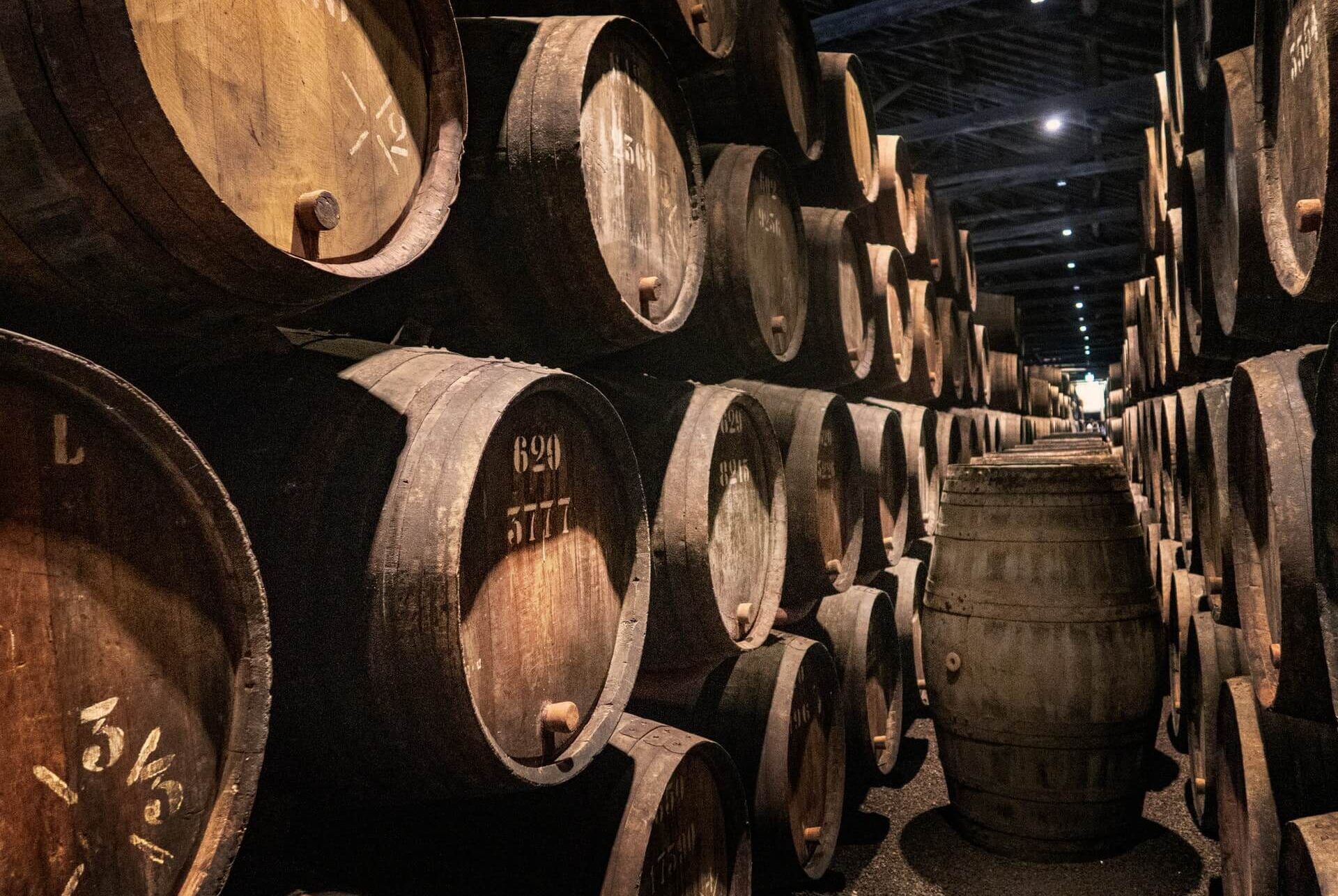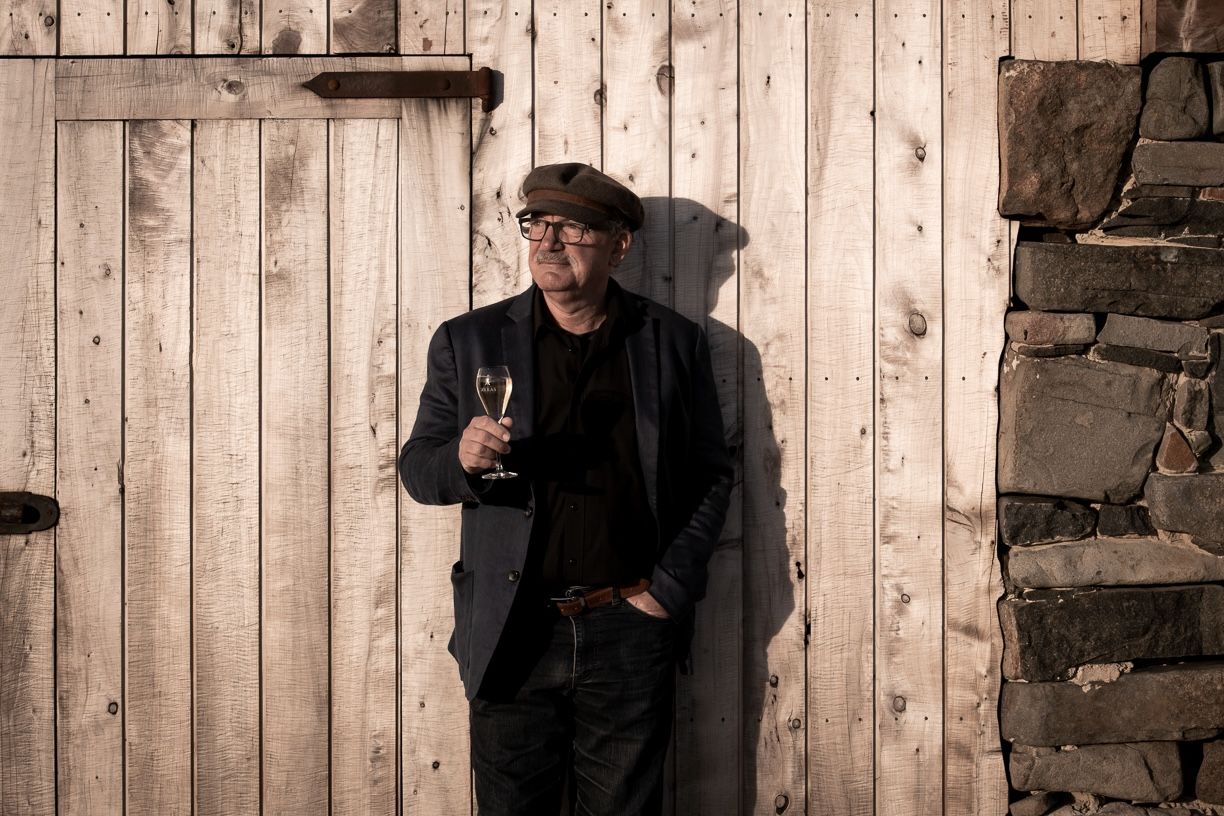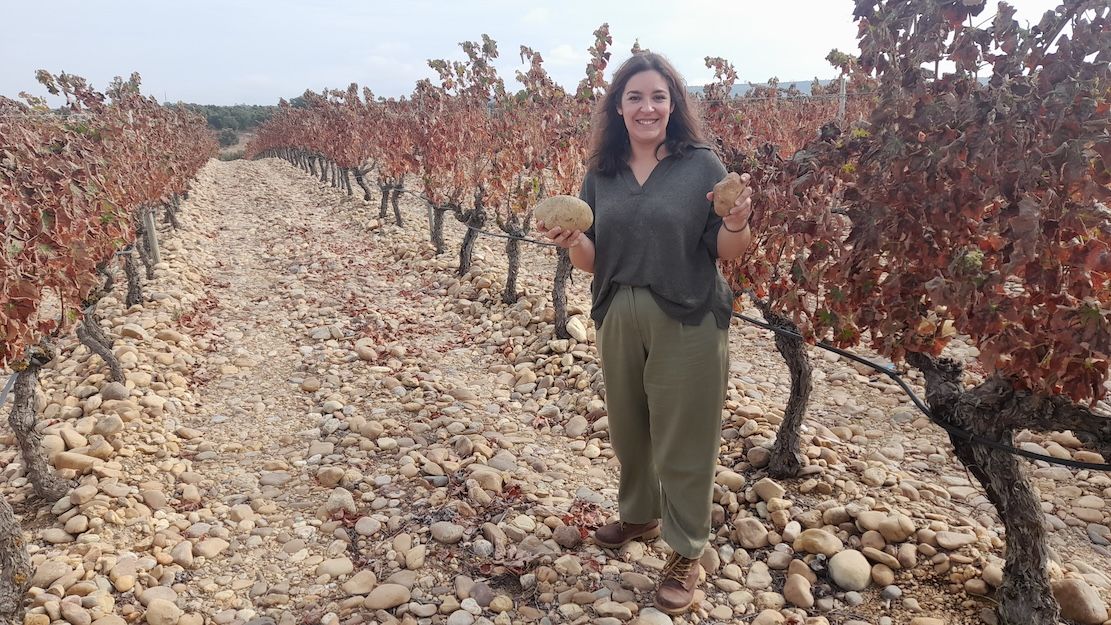Even with the recent growth in Irish whiskey there are thought to be another 30 distillieries in the pipe line and no sign of a slow-down, says Martin Moran MW, wine columnist for the Sunday Times in Ireland in his first article for The Buyer.
Nobody has plans to usurp Irish Distillers’ (IDL) giant, Jameson with sales of 10.4m cases in the year to June 2022. The focus is on stepping through the door opened by the behemoth and creating some excitement with innovation and premiumisation to appeal to a younger hipper consumer as a contrast to Scotch’s more staid traditonal tweed and tartan image.
So what are the Irish doing to deliver this vision? The trends I see include:

The Irish whiskey sector is very much wide awake and growing at enormous pace
- The unique Irish jewel, single pot still.
- Flexible and innovative aging and not just cask finishes.
- Grains and cereals beyond barley.
- Tapping into the craft and natural trends focusing on authenticity, terroir and sustainability.
- Double distillation and peat.
- A flavour kaleidoscope from light and accessible for the novice to complex and intense for the connoisseur.
Single Pot Still
Ireland’s gift to the world of whiskey is undoubtedly single pot still, made using a mixture of malted and unmalted barley, emerging as a way of avoiding British taxes on malted barley introduced in 1785. Its flavour has a distinct spicy green note and historically IDL’s standard bearers Redbreast and Green Spot add a lot of sherry cask ageing.
The 2014 G.I. technical file for pot still production specifies a mash bill with a minimum of 30% malted and unmalted barley and a maximum of 5% other grains, which essentially codified how IDL made theirs. It put new entrants at a distinct disadvantage, having to basically copy IDL, but without their access to mature stocks.
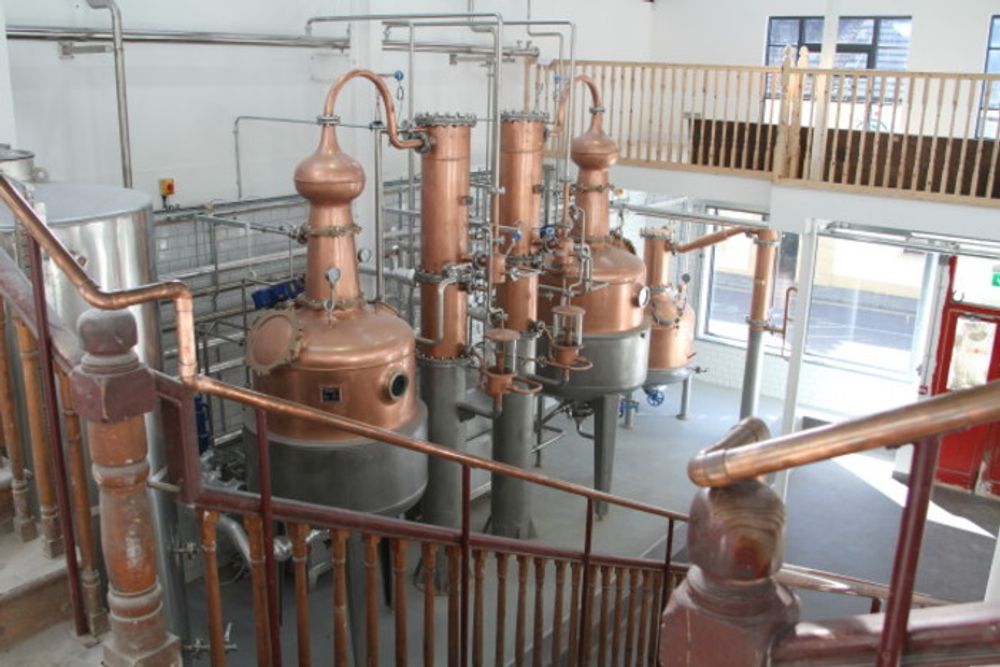
The Blackwater Distillery run by Peter Mulyran is looking to revive many of the traditions around Irish Whiskey
Whiskey historian Fionnàn O’Connor and Blackwater distillery’s Peter Mulryan have pointed out that the regulations don’t reflect the industry’s traditions as there are many historic examples of mash bills involving oats, rye and wheat in significant quantities. The Irish Whiskey Association has submitted proposals for amendments to the relevant government departments on both sides of the Irish border that would allow for more flexibility.
Last year we got a peak into the future as Boann distillery, working with O’Connor, released a tasting pack of new make distillates from historic mash bills dating back to over 200 years old. Blackwater, having started earlier, released a pack of 4 x 20cl whiskeys with recipes dating back to 1838 labelled ‘The Dirtgrain Manifesto’, as a statement of future intent. And the future looks exciting.
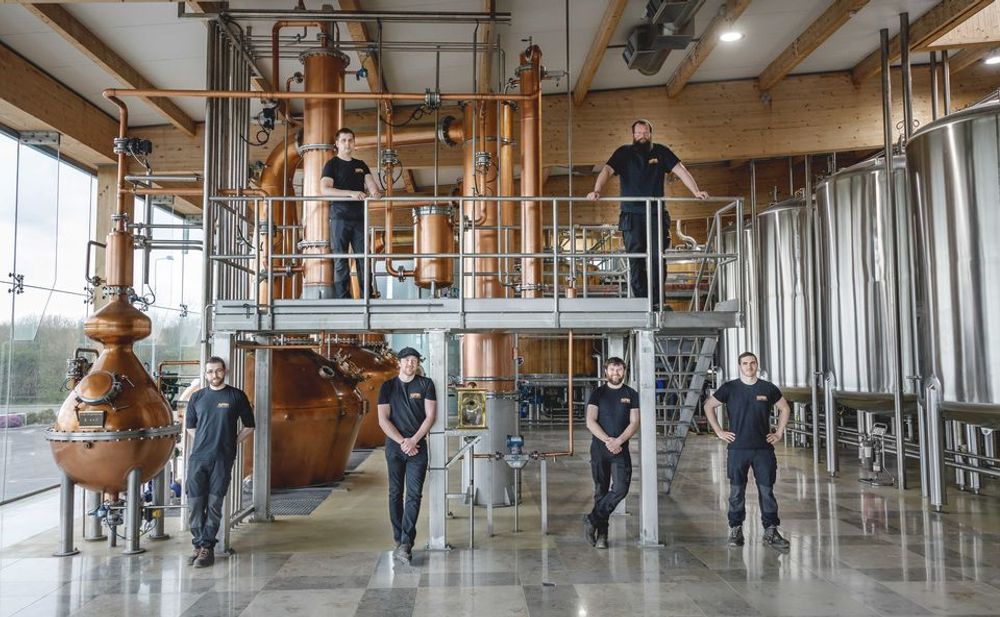
The distillery team at Boann in County Meath
Innovative Ageing
Few of the new wave have access to mature stock and some don’t even have three-year-old spirit yet. Cooley distillery founder John Teeling’s Great Northern distillery in Dundalk and West Cork Distillers in Skibereen were quick off the mark and supply a lot of the liquid sold under various brands currently available as the newbies wait for their own to come on stream, although old Bushmills and Cooley stocks pop up surprisingly often.
The absence of aged liquid has meant a big focus on innovative cask ageing. There’s a kaleidoscope of cask finishes available today beyond the ubiquitous bourbon and sherry involving almost any drink. This isn’t uniquely Irish but they have a string to their bow not available to the Scots. Irish production regulations require ageing in wooden casks but don’t stipulate what type, unlike Scotch which insists on oak.
The result is experimentation with barrels made of array of woods including acacia, cherry, chestnut, maple, Japanese cedar and no doubt more. Oak use has expanded beyond the traditional too and can include native Irish oak from Wicklow and Japanese Mizunara. Fans of the iodine like aromas of Islay malts can find it in Currach Atlantic Kombu Seaweed Single Malt, aged in barrels charred by burning seaweed in them.
Beyond Barley
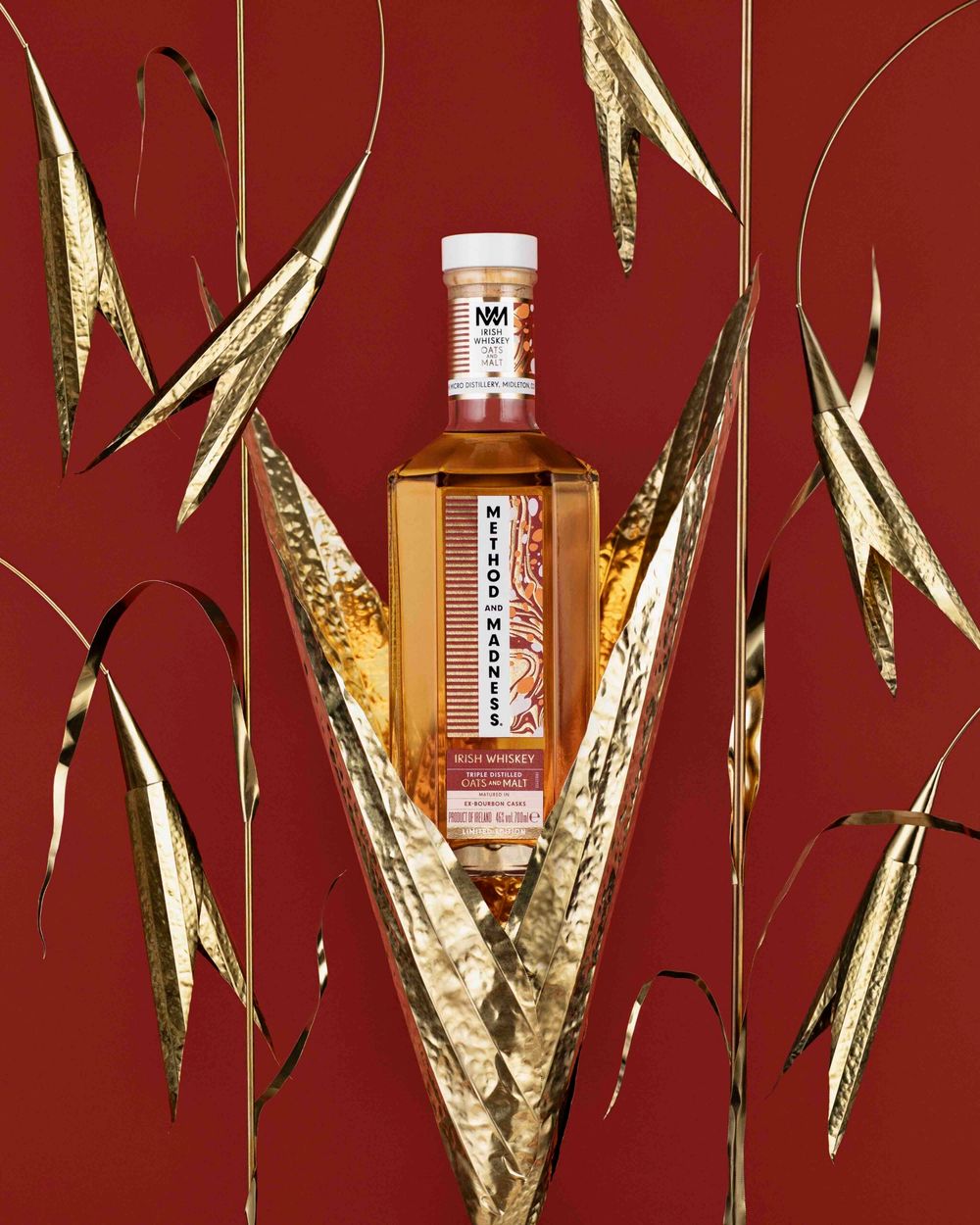
GI changes or not, distillers have been experimenting with cereals other than barley. Once again their options are more flexible than the Scots. Scotch regulations demand the inclusion of some barley at least and that the resulting spirit’s taste is typical of Scotch whiskey, so rye can be used but not at 100%.
IDL though last year released Method and Madness Oats and Malt Irish Whiskey from their micro distillery following on from rye and malt the previous year and more significantly in February released Power’s 100% Rye Irish Whiskey.
Authenticity, Terroir and Sustainability
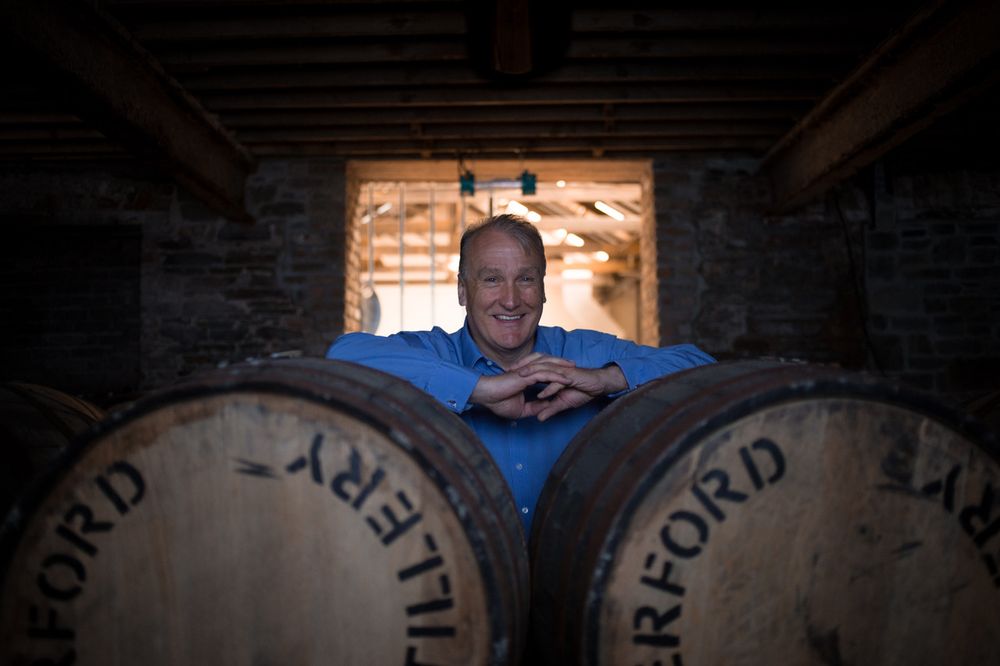
Waterford’s Mark Reynier is playing a key role in developing Irish whiskey by making what he calls terroir driven whiskey
Craft and sustainability have been key feature of most food and drink sectors for several years and Irish whiskey is no different. A number of distillers have adopted a grain to glass approach, by using grain they’ve also grown, usually organically, including Slane Castle, Echlinville , Lakeview, Pearse Lyons and Ballykeefe. Waterford distillery doesn’t grow its own but Mark Reynier, who transformed Bruichladdich’s fortunes, has created small batch whiskeys from individual farms to explore the idea of terroir in whiskey. Most commentators say he has succeeded. He’s also busy experimenting with and rescuing heritage barley grains, some from literally the last remaining handful of seeds. Becoming carbon neutral is on everyone’s agenda big or small and IDL is investing to become carbon neutral by 2026
Peat
Irish whiskey is triple distilled and doesn’t use peat and is spelled with an ‘e’, right? Not always. Quite a bit is made with just a double distillation and Waterford doesn’t use the ‘e’. They also have a peated bottling. Ireland’s Victorian era industry had a history of using peat, particularly in non-urban distilleries and it’s increasingly being revived. Donegal’s Sliabh Liag’s Dark Silkie makes a feature of it, while others dabble with it as another part of the flavour palette. Most have sent barley to be peated in Scotland, but some small batches are being done in Ireland and those locally peated ones I’ve tasted appear more subtle than their Scottish cousins.
Flavour Town
Irish whiskey’s greater flexibility in production techniques and labelling compared to Scotch means skilled distillers and blenders can produce an extraordinarily diverse spectrum of flavours from subtle enough for cocktails and mixed drinks to intense, complex, contemplative sipping drams. The next few years will see some of the new wave distilleries able to release their own aged and Dingle has just put out a 10-year-old.
The present day is exciting and dynamic but the future looks even more fascinating. As a buyer, ignore it at your peril.
